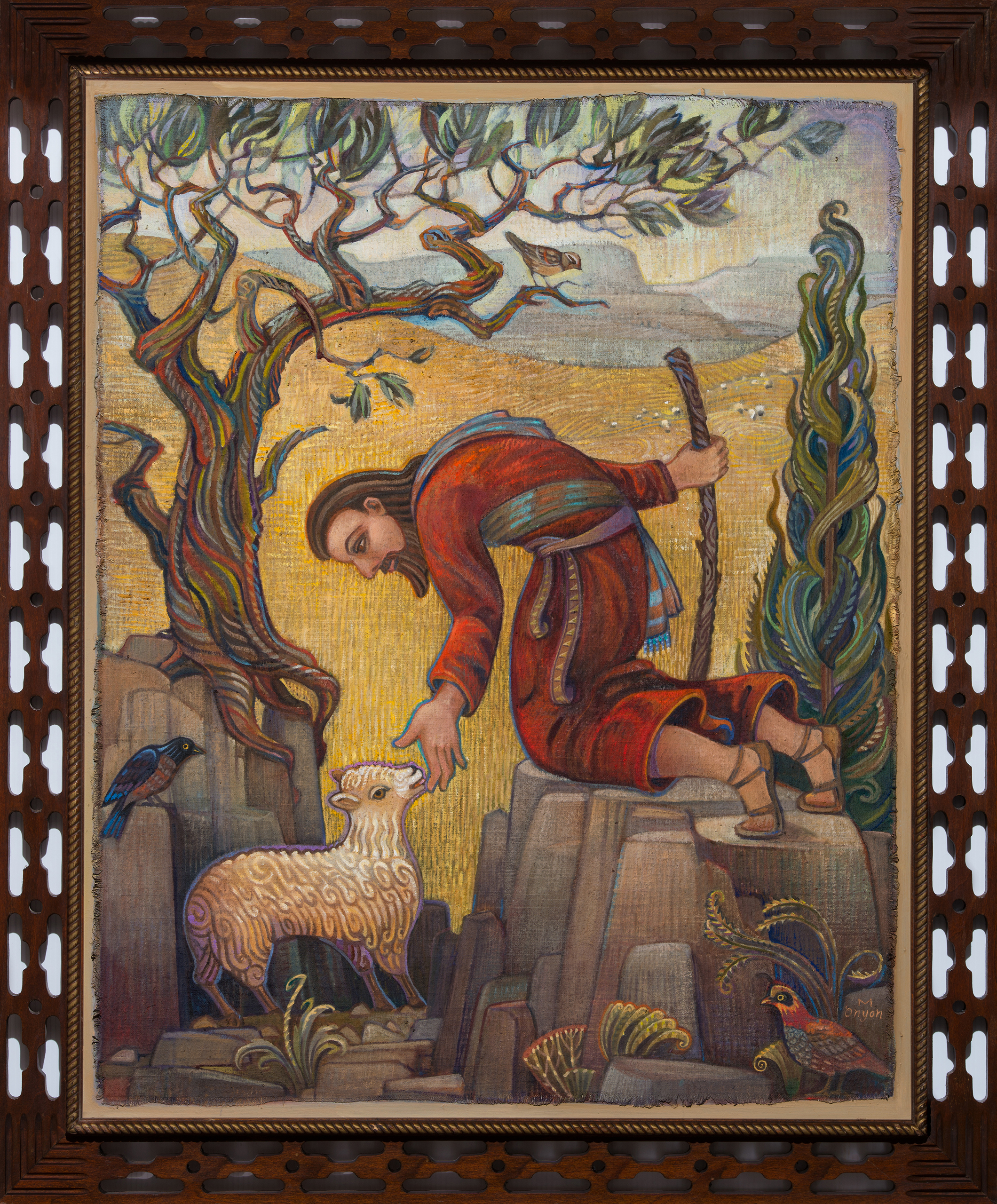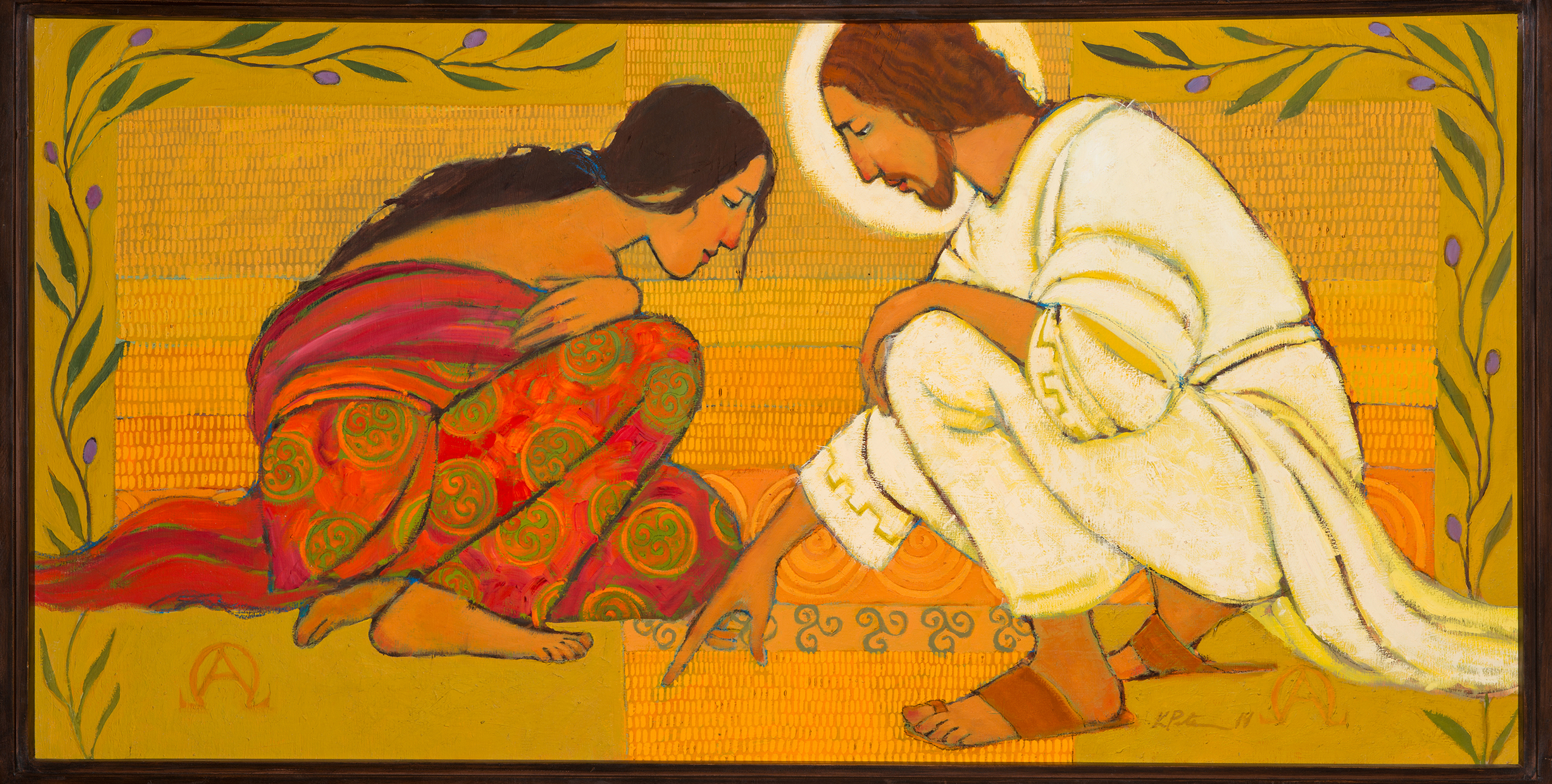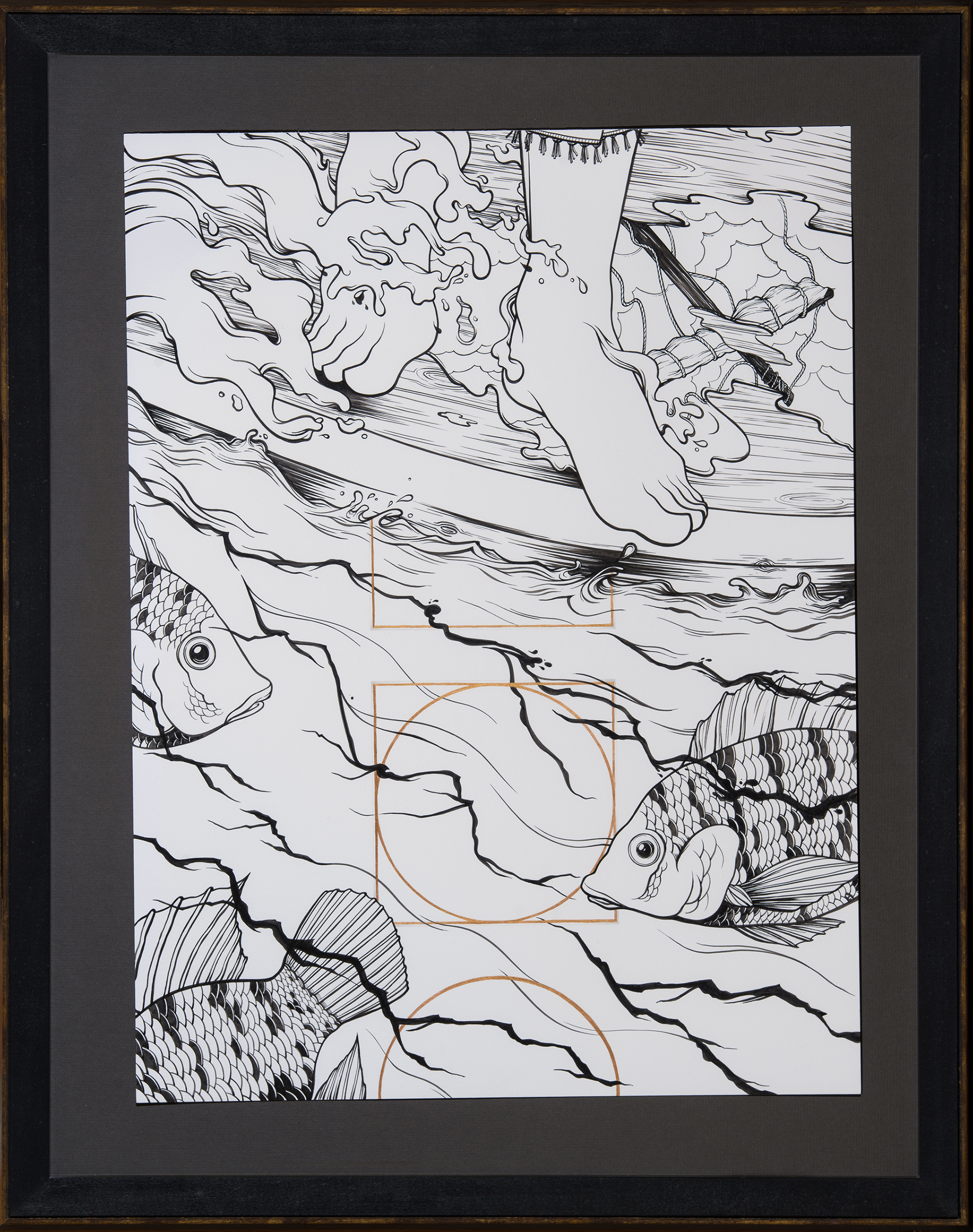Guest Post: Glen Nelson, Mormon Artists Group
The 10th International Art Competition for the Church of Jesus Christ of Latter-day Saints opened recently with an exhibition in Salt Lake City. It is housed in the Church History Museum building, which has been renovated from top to bottom. The full exhibition is available for viewing online. You can vote for your favorites. Check it out. And if you are near Temple Square in the next year, go see it.
I was asked to serve as a juror for the competition. To be honest, I felt a little embarrassed to do it. I have a fine art bias, and I wasn’t entirely sure that the competition’s goals—which have historically leaned toward illustration—aligned with my expertise. But there were four other jurors, and I felt satisfied that together we could make it work.
Today, I’m not writing a behind-the-scenes account of the competition jury. However, I think it might be interesting for people to read about a few things that I learned from the experience.
Here’s a quick overview of the competition process. Artists were invited to create works. The May 2014 Ensign announced a call for entries, which would be accepted from November 3, 2014 to February 27, 2015. Participants had to be 18 or older, and the works had to be made in the last two years. As in the previous competitions, the artists were given a theme; this one: “Tell Me the Stories of Jesus.”
The artists provided a digital image of the works they wanted to enter. They also wrote a short artist’s statement, particularly about how the work fit into the theme. All of these submissions were loaded into a database, and I was told to go through them and score them based on a rubric the museum and the jury created—the works’ excellence, innovation, and use of the theme.
When I worked my way through the images at my home computer, I was struck by a few things. First, the level of quality was all over the place—there were artists who exhibit regularly in important American galleries, artists whose work is very well known in Mormon circles but have little reputation elsewhere, artists who are skilled painters as well as quite a large number who are devoted hobbyists and have probably not exhibited anywhere before now. There were works that really spoke to me and moved me, and there were works that I looked at and wondered if the artist were taking it seriously at all.
Second, the artists were all wrestling with the theme. It looked to me like some of the artists had created submissions specifically aimed at entry into the competition; they saw the theme, “Tell Me the Stories of Jesus,” and then they started creating a piece. Others were shoe-horning existing work into it. They wanted to participate in the show but probably would have preferred not to be given specific and limiting directions.
Third, although I was not drawn to the majority of the submissions personally as fine art—they didn’t strike me as being extraordinary enough—I found it very moving to look at these works, nevertheless. They were made from a place of devotion. There’s nothing I love quite so much as artists who create things that are deeply personal, intimate, and meaningful to themselves. Everything deserved to be exhibited…somewhere, just maybe not at a museum.
And one last thing: the jury got along great. I hadn’t met any of the others before—from Australia, Singapore, Springville, Utah, and Salt Lake City, Utah—but I can’t say enough about how skilled and caring and smart (and sometimes tough) they were.
Condensing the jury process: I scored all the works at home initially by looking at digital scans. The pool of submissions was shrunk down. Then the Museum gathered the artworks that made it through the first round by having them shipped to Salt Lake City. (This was a tremendous effort that was beautifully and rapidly accomplished by museum personnel. Think of the logistics!) Jurors were also brought to Salt Lake City in mid-May. We spent time with all the works, we ranked them, winnowed them, and then talked about every work, as a jury panel. As you’d imagine, artworks had advocates and detractors. Finally, we came up with the works that are on display now. We are fully responsible for the selection of the exhibition. No other entities inside or outside the Museum weighed in on our choices. We were given no quotas on the number of works for the show or anything about content. Each of the jurors gave a merit award to an artist of their choosing, and the global arts curator for the Church made purchase awards, that is, she got to buy stuff. (Each artist had indicated a monetary value for their submission.)
So that’s the preamble. Let me discuss three lessons that the experience taught me. I hope you’ll find them interesting.
Mormon artists want to engage in creating imagery of the cross. For me, this was one of the biggest surprises of the competition experience. The New Testament theme was so broad, artists didn’t need to tackle the crucifixion, but many, many did—in paintings, photographs, and other works. We have been told, as members of the Church, that the crucifix is not a primary symbol of Mormonism, and indeed it is practically absent from our graphic identity.
When I first looked at these submitted images, I expected to see that they came from countries with predominantly Catholic populations. Perhaps that was a prejudiced idea. I know from my own experience living in Latin America, that such images are so common as to become a shared vocabulary. I thought that Latin and Filipino LDS artists, for example, might be more likely to create images of Jesus’ death than artists outside of that heritage. But I was mistaken. Crucifixion artworks seemed to be coming from everywhere. Why? Does the pain of the biblical experience speak to artists? And why now?
All of the jurors commented on this phenomenon. Artists appeared to be more comfortable showing their own pain, too, and I have to wonder whether the confessional nature of social media has broken down some of the traditional barriers regarding identity and given artists permission to be more intimate.
Maybe I’m wrong, but it felt a bit defiant, as well. They were submitting these works to an institution that has made it quite clear that their preferences for images of the Savior lie elsewhere. And yet, these are beautiful and powerful. They work. I didn’t find them, in any way, inappropriate because of their subject matter. I will be curious to see if this is a trend, and if so, how it spreads to other areas of Mormon character.
There is a battle within the Church regarding what Jesus should look like in its sanctioned art. During the time I was a juror, I had multiple meetings with people on temple art selection committees, curators, painters, and so on. A topic that arose in practically every gathering was the issue of getting an image of Jesus approved for public exhibition today. Who decides what the painting of the Savior displayed in your church building looks like? Or your temple? Or your Church magazine or website? I suspect that if every one of our 15 million members had a way to describe the image of Jesus they see in their mind’s eye, there would be no consensus. In fact, it would be the opposite of consensus. So how do you create a religious symbol for the entire Church? Tricky question, not a trick question.
Submissions to the 10th International Art Competition showed an expansive range of approaches to depicting Jesus, generally. This goes beyond boundaries such as race—in the exhibition, there’s a painting by a Cambodian artist of Jesus looking quite like Buddha, for example, just as there have been submissions in previous competitions from Latin America of Jesuses who look Hispanic, and for that matter, Jesuses who are so pale as to look practically Nordic.
I guess I’m more interested in a different aspect of His visage: what should be the tone of the artwork? Should it try to look like an Old Master? (Is it Carl Bloch or bust?) Is it ok to draw a cartoon with Jesus in it? Can Jesus be updated and depicted in modern dress? All of those issues, so common in any discussion of art as a tool to make itself relevant to contemporary viewers, are politically fraught with our artists and those tasked with displaying their work. Look through the exhibition and you’ll see how broad the range is.
One work that didn’t make it to the show was an image of a naked Jesus, looking somewhat like a watercolor of Egon Schiele—emaciated, slightly green, garish, tortured. I couldn’t tell whether the artist intended the reference to early twentieth century Austrian art, but personally, I was into it. Clearly, it would be a challenge to hang it near Temple Square, and if it had been painted a bit more skillfully, I might have tried to make a case for it.
Offense comes easily and disappointment, easier. I was keenly aware during my time on the jury that my views weren’t universal. Not with the jury and not with the potential viewers of the show, either. I took some solace, like a firing squad rifleman, that I could hide behind the blanks of other jurors. I joked with artists that if you liked anything in the show, I voted for it; and if your submission didn’t get in, I voted for it.
Artists who participate in juried competitions are well aware of the subjective quality of all this. But I worried/worry about those whose skins haven’t been toughened in that way. I hope that they realize how strongly I value them as artists, even if this experience didn’t work out exactly as they wished it might.
I saw the finished exhibition about a week ago. The Museum staff, again, did a terrific job hanging, lighting, describing, and protecting the works. Although we selected the works on exhibition, the success of it is almost equally on the shoulders of people who decide where works are hung, and by which other works. That is, they take the artworks and make a story of it. It’s a pretty interesting tale, if you ask me.
I wonder if anybody seeing the exhibition will be offended by what they see. I hope not; I don’t think they will be bothered. It would surprise me, but it’s possible. Maybe they might shrug. They might shake their heads. If they’re artists themselves who weren’t selected this time, they will likely think, My work was better than that. And they might be right. And if they didn’t submit artwork, I hope they’ll reconsider next time. The New York lotto says, “You have to be in it to win it.” Personally, I’m less interested in “winning,” but I would say this to LDS artists: “If you didn’t submit, you can’t whine about it.”
—
Glen Nelson is the creator and driving force behind the Mormon Artists Group. You can download his newly updated eBook The Glen and Marcia Nelson Collection of Mormon Art. Nelson, a writer, lives in New York City. The artwork above were all included in the competition (Michal Diane Onyon, Kathleen Peterson, and David Marshall Habben II). Images courtesy the respective artists and LDS.org.



